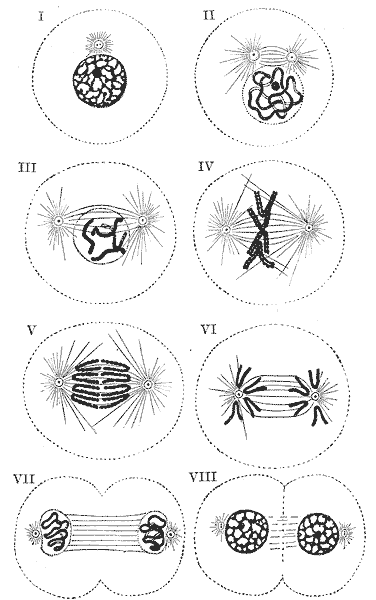heyy, i cant understand the difference between chromatic and nucleolus??
can some1 explain plzz..would b very thankful !!
What? You mean Chromati
n ? orrr

If that's the case, I can easily tell you the difference by showing you a picture or two. Let me know.
Chromatin(a) Chromatin is a complex of DNA and protein
(b) Chromatin is not visible, as individual chromosomal entities, through a light microscope
(c) Prior to cell division (M phase) a eukaryotic cell's genome consists of chromatin
Nucleus(a) In eukaryotic cells the cell DNA is separated from the cytoplasm
(b) Most of this DNA is contained within the cell's nucleus
(c) The DNA within the nucleus is found as DNA-protein structures called chromatin
(d) During cell division, nuclear DNA is organized into chromosomes
(e) The structure that serves to divide the interior of the nucleus from the cytoplasm is the nuclear membrane
(f) Prokaryotic cells, by definition, lack nuclei (which is the plural of nucleus)
heyy, i cant understand the difference between chromatic and nucleolus??
can some1 explain plzz..would b very thankful !!
What? You mean Chromati
n ? orrr

If that's the case, I can easily tell you the difference by showing you a picture or two. Let me know.
Chromatin(a) Chromatin is a complex of DNA and protein
(b) Chromatin is not visible, as individual chromosomal entities, through a light microscope
(c) Prior to cell division (M phase) a eukaryotic cell's genome consists of chromatin
Nucleus(a) In eukaryotic cells the cell DNA is separated from the cytoplasm
(b) Most of this DNA is contained within the cell's nucleus
(c) The DNA within the nucleus is found as DNA-protein structures called chromatin
(d) During cell division, nuclear DNA is organized into chromosomes
(e) The structure that serves to divide the interior of the nucleus from the cytoplasm is the nuclear membrane
(f) Prokaryotic cells, by definition, lack nuclei (which is the plural of nucleus)
--Maybe Irrelevant--If you are studying nuclear division. . have a look at :

Interphase is stage I of the diagram
* Prophase, Stage II,III- The chromatin condenses into a highly ordered structure called chromosomes and the nuclear membrane begins to breakup. The nucleus also breaks up and forms part of several chromosomes. Centrioles move to opposite poles of nucleus.
* Metaphase, Stage IV - Condensed chromosomes, carrying genetic information, align in the middle of the cell before being separated into each of the two daughter cells.
* Anaphase - Stage V, VI Chromatids (identical copies of chromosomes) separate as they are pulled towards opposite poles within the cell. They are pulled because the microtubule fibres begin to shorten, pulling them along.
* Telophase - Nucleus, nucleolus reforms and chromosomes unravel into longer chromatin structures for reentry into interphase. Cytokinesis also occurs - the division of cytoplasm and cell into two by constriction from edges of cell.
This section is called the PMAT section as it is an easy way to remember the stages of mitosis (Prophase-Metaphase-Anaphase-Telophase).
Hope I helped.
-MaNi
P.S. Asmaa? lol